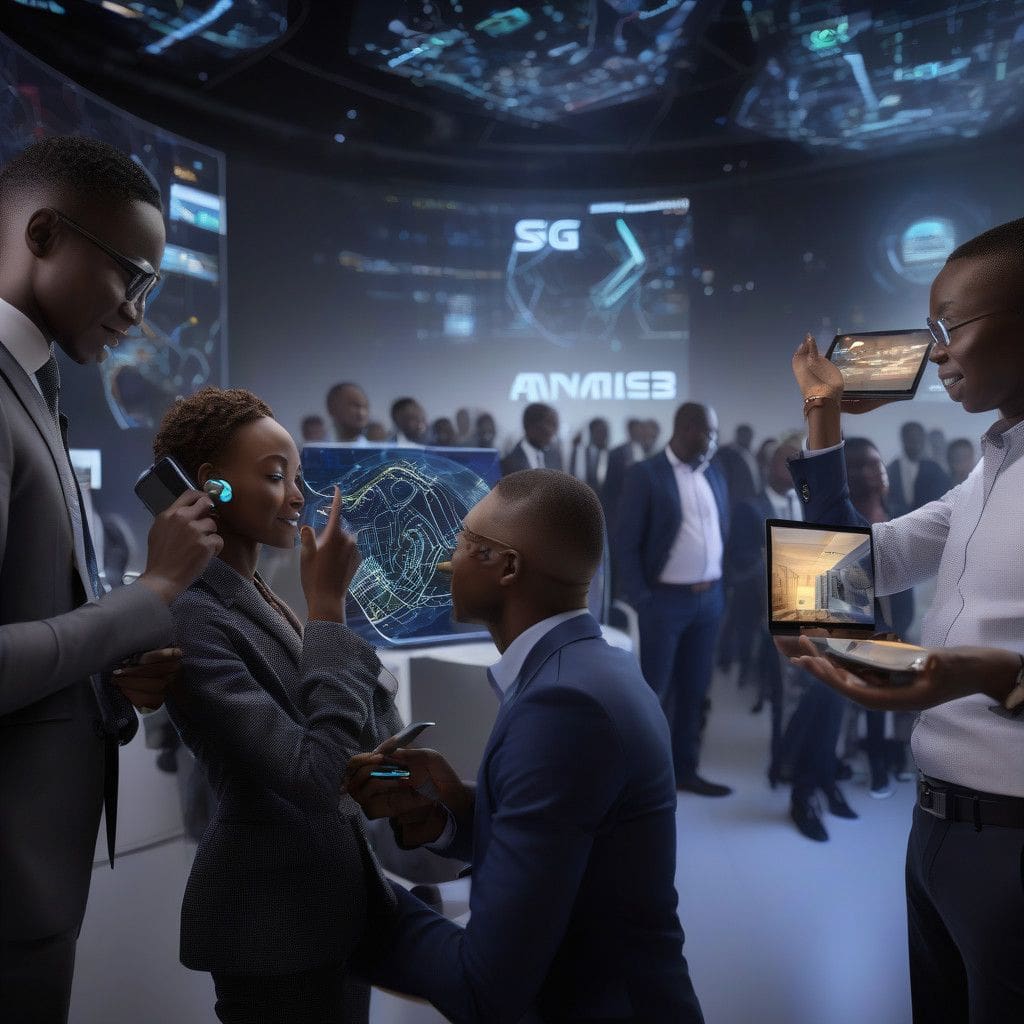MTN South Africa and Huawei have made headlines by successfully completing Africa’s first 5.5G network trial. This pivotal milestone not only underscores the rapid advancement of telecommunications in Africa but also signals a transformative shift in connectivity that promises to redefine digital experiences across the continent.
The trial showcased the remarkable capabilities of 5.5G technology, demonstrating connection speeds of up to 10 Gbps, which is tenfold faster than current 5G networks. This leap reflects the potential for a higher number of Internet of Things (IoT) connections, significantly lower latency, and greater energy efficiency. With these enhancements, the region is poised to embrace cutting-edge applications ranging from high-speed Fixed Wireless Access (FWA) to holographic conferencing and extensive private networks.
This technological upgrade is crucial for advancing South Africa’s digital economy, fostering new business opportunities, and bridging the digital divide that persists in many areas. The benefits extend beyond enhanced speed; geographical regions previously lacking reliable internet connectivity now stand to gain considerable access to high-speed networks, promoting both social and economic development.
The practical side of the trial utilized Huawei’s advanced SingleRAN technology, along with ultra-wideband, active-antenna units, and sophisticated beamforming techniques. By leveraging millimeter wave and C-band spectrum resources in a 5G standalone mode, MTN and Huawei achieved an impressive ultra-high-speed experience of 8.6 Gbps. This real-world demonstration of 5.5G’s capabilities provides a tangible glimpse into the possibilities for the future of telecommunications.
Why does this matter? The collaboration between MTN and Huawei represents a unified vision for propelling Africa towards a digital future. It emphasizes a commitment to innovation and sustainable solutions that can uplift communities and businesses alike. As actual deployment begins, consumers and enterprises will soon enjoy sophisticated services that could enhance daily experiences—from entertainment to business operations.
For instance, consider the implications for remote work. With the speeds and capabilities of 5.5G, seamless connectivity for video conferencing, real-time collaboration on projects, and access to cloud resources become significantly improved. The ability to hold a holographic meeting or utilize augmented reality for training purposes could revolutionize industries, reduce overhead costs, and provide a competitive edge.
Moreover, the significance of the trial cannot be overstated. It lays the groundwork for future developments in digital infrastructure across Africa. As countries race to modernize their telecommunications, the successful implementation of 5.5G positions South Africa as a frontrunner in the digital space, potentially attracting investment and talent that can catalyze even further growth.
Critically, this technological shift indicates a broader trend within the global telecommunications landscape. Countries around the world are observing Africa as it navigates these advancements, understanding that this region could become a leader in digital innovation and economic diversification. In aligning with global standards, Africa can harness the opportunity to develop unique solutions tailored to its challenges while generating novel approaches to connectivity.
In summary, the collaboration between MTN and Huawei in launching Africa’s inaugural 5.5G trial marks more than a technological milestone; it initiates a new chapter in digital connectivity for the continent. With fast-tracked implementation of these advanced technologies, the foundation is being laid for improved lives and economic prospects, ultimately enriching the digital ecosystem as a whole.
As we anticipate the next steps following this trial, one thing is clear: the future of connectivity in Africa is bright, with the potential for innovation and inclusion at its core.
